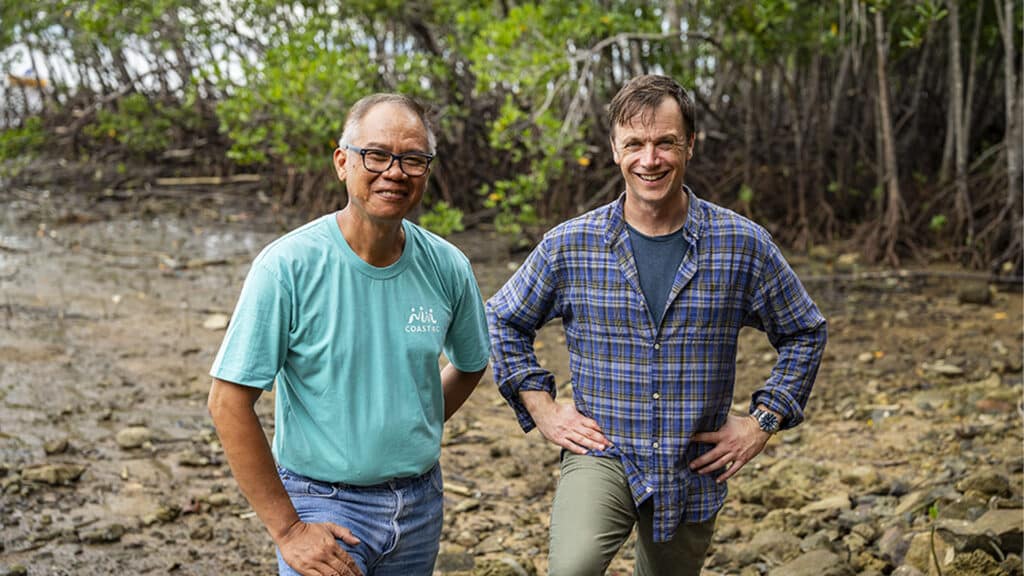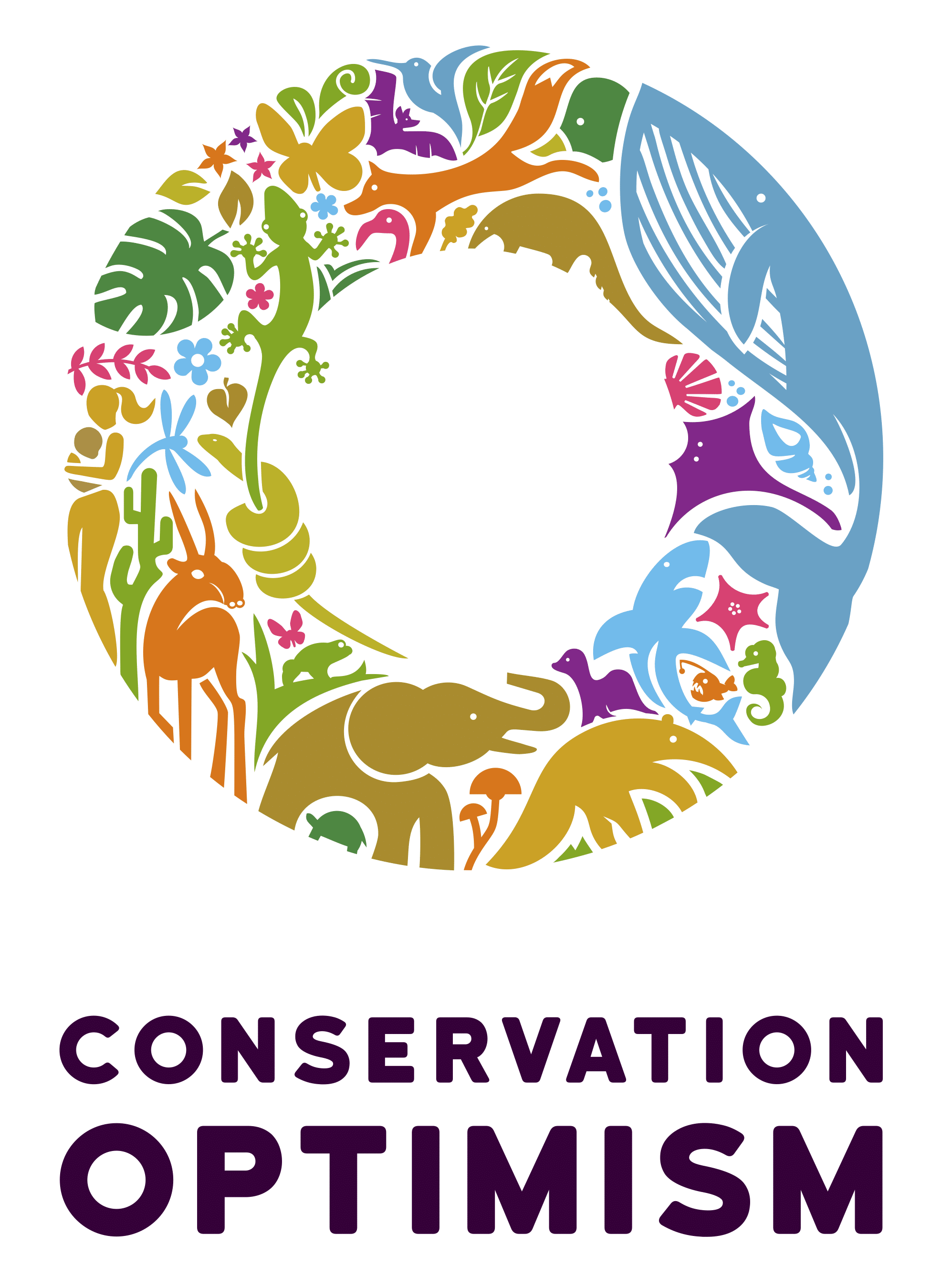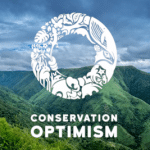Have you ever wondered how conservationists spend their days or what keeps them optimistic about the future of nature? Do they always spend their time in the distant wild, or might they be hidden all around us? Do their roles encompass aspects we never thought of?
“Meet The Optimists” is a monthly blog series by Conservation Optimism which introduces conservationists working in different fields and contexts to our readers. We discuss their journeys into conservation, typical daily activities and reasons for hope.
Read on for the inside story on different careers and fresh approaches to conservation!
In the October 2024 blog of Conservation Optimism’s “Meet The Optimists” series, Nick Hill comes up with his story of optimism, as the co-founder of Coast4C and this year’s Earthshot Prize Finalist!

Photo credit: Noel Guevara
Could you please introduce yourself to our readers?
I’m Nick Hill, co-founder and CEO of Coast 4C. We’re an impact-driven business working with thousands of smallholder seaweed farmers, initially in the Philippines, to create a reliable supply of high-quality seaweed. This responsibly sourced crop services the booming demand for sustainable alternatives to carbon-intensive feedstocks in a range of industries, whilst reviving our ocean and building prosperous and resilient coastal communities. Our 4Cs – ommunity, Commerce, Conservation and Climate – are our version of the traditional 3Ps: People, Planet and Profit. Excitingly, Coast 4C has been announced as a Finalist for the Earthshot Prize – which very much feels like we’re on the podium of the environmental Olympics!
Can you trace the origins of your interest in conservation and what led to your current work?
I grew up in the Midlands in the UK – about as far from the sea as you can get in that country! Living in the countryside, I was always fascinated by the kettle holes (depressions in the landscape, often small lakes, formed by retreating glaciers) that dotted the landscape around me and enjoyed exploring the micro-worlds in the succession communities. But, as cliche as it sounds, it was Sir David Attenborough who brought the wonders of the ocean to my world and inspired my interest in conservation! I vividly remember seeing coral reefs on the TV for the first time and thinking how much I wanted to explore them! This passion led me to study biology at school and pursue an ecology degree at Edinburgh University. From there, I went to work in Mozambique as a marine biologist, where I realised the obvious – that conservation is 90% about human behaviour. So I studied an MSc and then a PhD with Conservation Optimism’s founder, Professor EJ Milner-Gulland, as my supervisor. My co-supervisor (and now board member of Coast 4C) Professor Heather Koldewey introduced me to Amado ‘Madz’ Blanco, who invited me to the Philippines to explore seaweed farming and fishing – and that ultimately led us to Coast 4C!

Photo credit: Noel Guevara
What does a typical day of work look like for you?
Nowadays, my work day is quite different to when I started in this career. My first job in conservation was as a fish counter and biologist, living in a tent and working in a remote area of northern Mozambique. It was an incredible experience and adventure – this was around the time when Blue Planet was released by the BBC, and I remember feeling lucky that I saw many of those breathtaking sights every day – feeding frenzies joined by sailfish/marlin and dolphins, manta rays swimming along the shoreline, and huge coconut crabs all over the beach.
As co-founder and CEO of a start-up business, I’m more often in front of the computer and on calls, often during unsociable hours. When I’m at home in Sydney, I often have calls in European time zones, and much of my time is spent on fundraising, as well as the general running and growth of the company.
My day starts with being woken by the kids, getting them ready and then cycling them to school. After that, the mornings tend to be a bit quieter because we’re a couple of hours ahead of the team in the Philippines and Singapore. This allows me to handle emails, update pitch decks, work on reports etc. As the day progresses, I have one or two team meetings. Then it is often into calls with investors / funders / partners or board meetings. I try as much as possible to have a break around 5-8pm to pick up the kids and get them through dinner to bed. After that, I’m back into calls with partners, clients or investors in European time zones, or working on documents. I try to get into bed by midnight, but often it is a lot later, and it is not uncommon for me to do some rowing on the rowing machine around midnight or even later trying to put a break between work and sleep!
Now that we’re finalists in the Earthshot Prize, it is even more intense as there are so many incredible opportunities – we need to be prepared to grab them with both hands – the door is very much open but we have to walk through it. This is a once-in-a-lifetime opportunity, so we’re determined to make the most of it!
A lot of the time I am also travelling – often in the Philippines where I spend time with the team and look for opportunities to drive improvements in operations. I also spend an increasing amount of time in Singapore, which is a significant hub for the blue economy and blue growth in the region. And I have had the wonderful opportunity to travel to places like Norway, Hawaii, Indonesia, New York, Cape Town, to learn from other companies and/or pitch or represent Coast 4C in all sorts of forums.
What is your favourite and least favourite aspect about your role?
Working with the team and seeing the impact that we have on the ground is my favourite part. I particularly enjoy spending time in the communities. In places like the Philippines, these communities have shown me a very different way of viewing the world, and I feel very privileged to be able to have that experience. And of course, being selected as a Finalist of the Earthshot Prize has been an amazing and entirely surreal experience; I still have to pinch myself to check it’s not all a dream!
My least favourite has to be dealing with natural disasters such as super typhoons. When they occur, you instantly get thrown into a different gear/mode and there’s a lot to do. By the time the immediate danger to life is over, you are exhausted, yet the work has just begun. Unfortunately, we’ve had to go through a few of these. And every time, our incredible team is such an inspiration. They have often been directly affected themselves, and yet they are straight out to support our community partners.

Photo credit: Noel Guevara
As a conservationist, what makes you hopeful about the future?
Two things:
1. The power of people and of nature to hold on and recover. My undergraduate degree was in Ecology, but I quickly realised that this work is more about people and their behaviour, so I went into socioeconomics for my MSc and PhD. Through my work, I learned that most people genuinely want to do the right thing by the environment – they see and understand the threat and are deeply concerned about how it will affect them. When conditions allow, people really can achieve amazing things. And nature responds! Just look at some of the stories on the Conservation Optimism blogs!
2. That the solutions and technologies that we need already exist! Just look at the Earthshot Prize finalists over the past four years, for example: incredible solutions, often associated with strong business models. This actually moves me beyond hope and into optimism. Hope is when you don’t quite know the answer but hope something sticks. When you know there are the solutions then you can feel more optimistic that a better future is within our grasp. What we need to do now, urgently, is get to work and scale them up, which is what the Earthshot Prize is all about.
What helps you stay positive day-to-day?
Honestly, I’m not sure that you get much time to think about it when you’re in a start-up role; you just have to be positive. But it can be quite lonely in the business world,
particularly in conservation. Building a support network around you is essential so you have touch points with people ‘in the same boat’.
The little (and big) wins really keep you going – from hearing the positive experiences of one of our seaweed farmers, to your organisation becoming a Finalist in the Earthshot Prize! You don’t always have time to celebrate them, but hopefully, you can string them together enough to maintain momentum, and it’s super important to appreciate them!
Finally, getting out into nature must be one of the best ways to stay positive. I’m lucky enough to live next to the coast, and I love to swim in the sea any time of year. It’s hard not to be positive after a swim – both the exercise and seeing nature.
Could you share a story about a formative moment in your conservation career?
I already knew that I wanted to work in conservation when I was a teenager. I was a swimmer, and, through much persuasion, hard work and saving money, we managed to organise a diving course in Kenya. On my first tropical dive. I rolled off the boat and hit something. My first thought was “oh xxxx”, but I turned around to look and suspended under me was a huge manta ray. We spent the next hour diving with two manta rays dancing around us, while our dive instructor tried unsuccessfully to draw us back to the dive lesson he wanted to teach. It really did seem like an incredibly majestic dance; it was awe inspiring, particularly for a kid who grew up around potato farms and kettle- holes of Shropshire and who had hardly seen any wildlife more exciting than dragonfly nymphs and common frogs!
Any advice for someone interested in pursuing your field of work?
You have to be passionate about whatever it is you are doing. One way to maintain that is to remain connected with nature and the local communities most closely connected to it. If the nature of your work takes you further away from nature, make the time to reconnect with it. Nature is the ultimate source of inspiration. Be positive and optimistic and never give up! You may need to pivot, so don’t be so tied to an idea that you’re afraid to admit when it doesn’t work. We need to be honest about our failures. Innovation and learning cannot happen without failures. I like to think of them as “successful failures” – they are successful if you (and others) learn from them. Finally, don’t reinvent the wheel. there is always someone or something similar that has been done before – look for that and learn from it.


